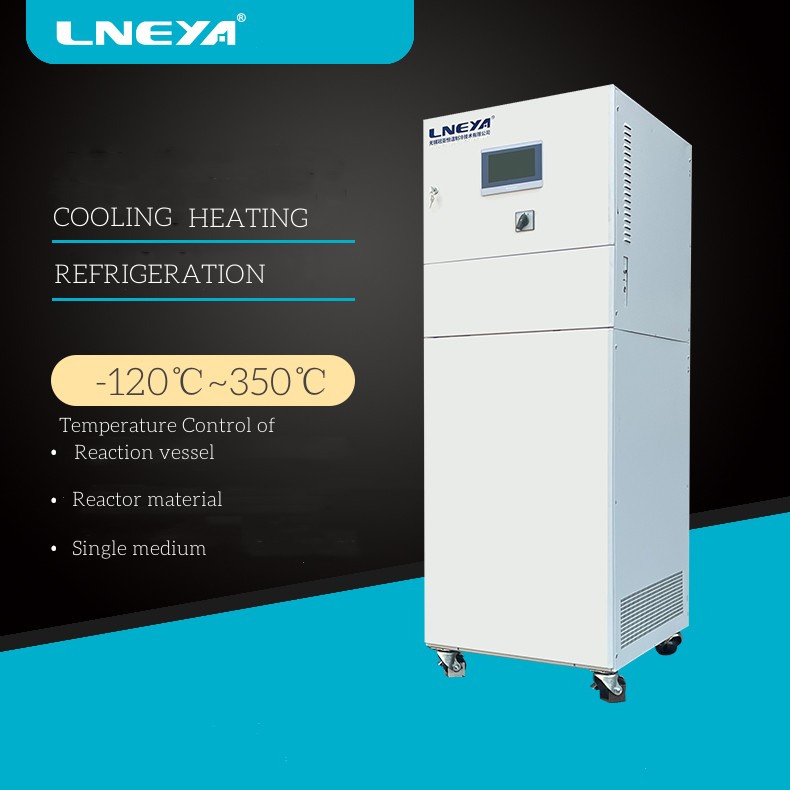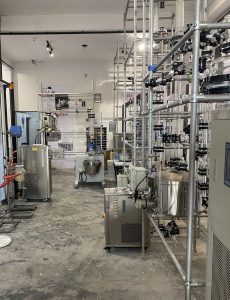Heat transfer oil for cooling and heating temperature control systems in the chemical and pharmaceut
The cooling and heating temperature control system, also known as a high and low temperature circulator or dynamic temperature control system, is a temperature control equipment used in the pharmaceutical and chemical industry to provide cold and heat sources for supporting reaction kettles. The LNEYA cooling and heating temperature control system uses heat transfer oil as the heat transfer medium. Depending on the temperature range and model of the equipment, different types of heat transfer oil can be selected.

1. Application note: Heat transfer oil is divided into different models based on different temperature ranges. It is recommended to choose the appropriate heat transfer oil according to the temperature range of the equipment model. Due to differences in equipment configuration, the heat transfer oil consumption of different refrigeration heating and temperature control thermostats varies. If it is a fully enclosed circulation pipeline, there is no water vapor or oil mist, and the amount used will be less than that of an open refrigeration heating and temperature control thermostat.
2. Quality analysis of heat transfer oil: The heat transfer oil in the cooling and heating temperature control system is generally analyzed from four aspects: viscosity, flash point, acid value, and residual carbon. Generally speaking, if the quality of the heat transfer oil in the refrigeration and heating temperature control thermostat changes, its viscosity will change. A change in acid value indicates that the heat transfer oil is contaminated or oxidized, and operators need to pay attention to it and replace it in a timely manner. If the heat transfer oil does not corrode, check the residual carbon value. Once it reaches the average value, it should be taken seriously. If these four data items do not exceed the range of changes, it indicates that the quality of the heat transfer oil in the refrigeration heating temperature control thermostat is good and can still operate normally. If one item is abnormal, it is necessary to consider taking corresponding measures and replacing it with a new heat transfer oil in a timely manner.
3. Precautions for use: The placement environment of heat transfer oil and refrigeration heating temperature control thermostats should be in a well ventilated and reliable environment. Although the boiling point of heat transfer oil is high, it is still necessary to avoid open flames. If the heat transfer oil leaks, it can cause accidents in contact with open flames, so open flames should be kept away. At the same time, it is necessary to be careful not to place it in the hot gas flame area to avoid ignition sources.
Related recommendations
-
The importance of temperature cycle control heating and cooling in the production of API
1969China has become the world's largest supply market for APIs. Most of the APIs and intermediates required by foreign manufacturers are purchased in my country. The drug outsourcing process of most of its preparation products, the production process...
View details -
Summary – the cause of the failure of the 85 ° C ultra-low temperature refrigerator
1391-85 ° C ultra-low temperature refrigerator in industrial cold treatment, with the development of industry, the scope of use is also wider. However, in the process of use, it will inevitably lead to failure, so how much do you know about common fau...
View details -
What is the connection between temperature and chemical reaction?
1318The chemical reaction can produce more stable products, and then as the temperature is released, the energy before the component reaction is released. On the other hand, the components of the reaction may produce different products, depending on t...
View details -
Maintenance of the Condenser in Low Temperature Chillers
1365In recent years, with the improvement of China's industrial production level, many professional industrial machinery and equipment provide greater help for different industrial production. As a very practical industrial refrigeration equipment, l...
View details
 LNEYA Industrial Chillers Manufacturer Supplier
LNEYA Industrial Chillers Manufacturer Supplier













